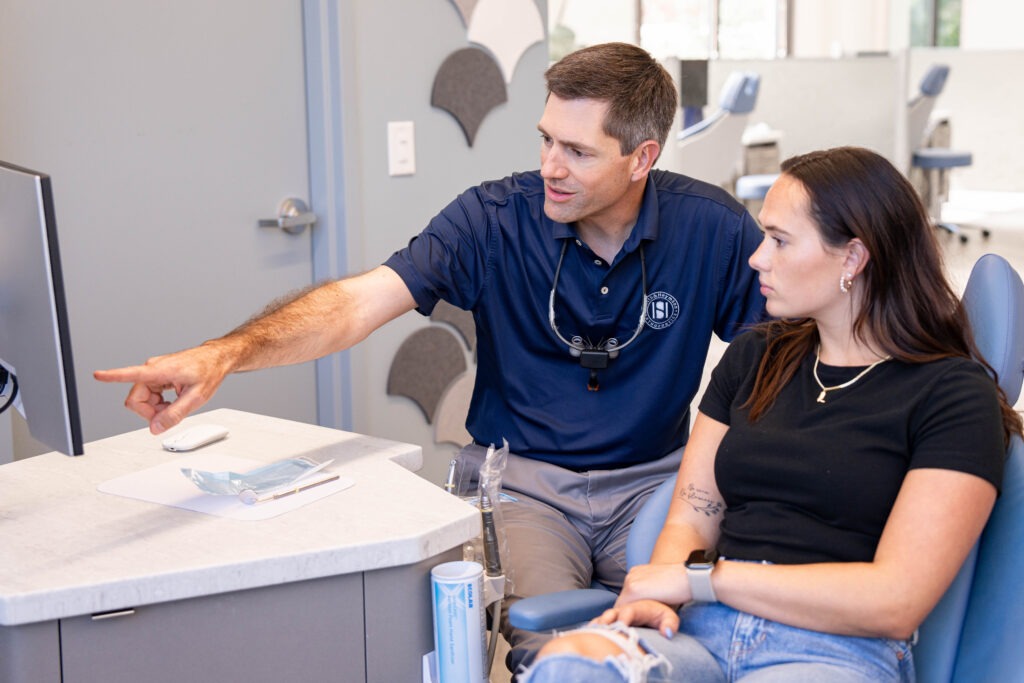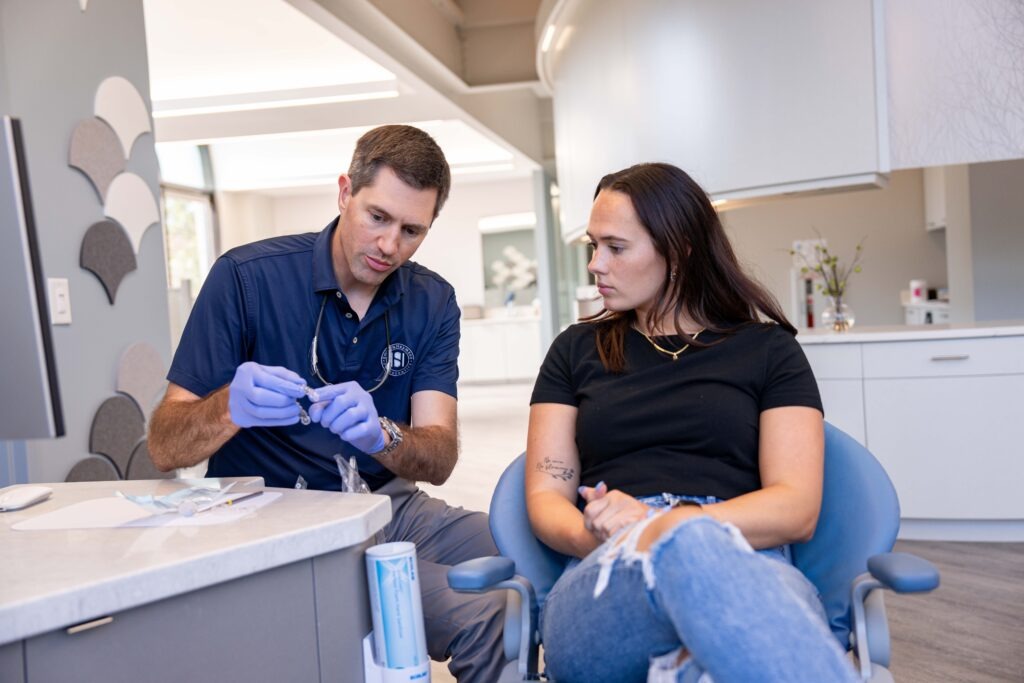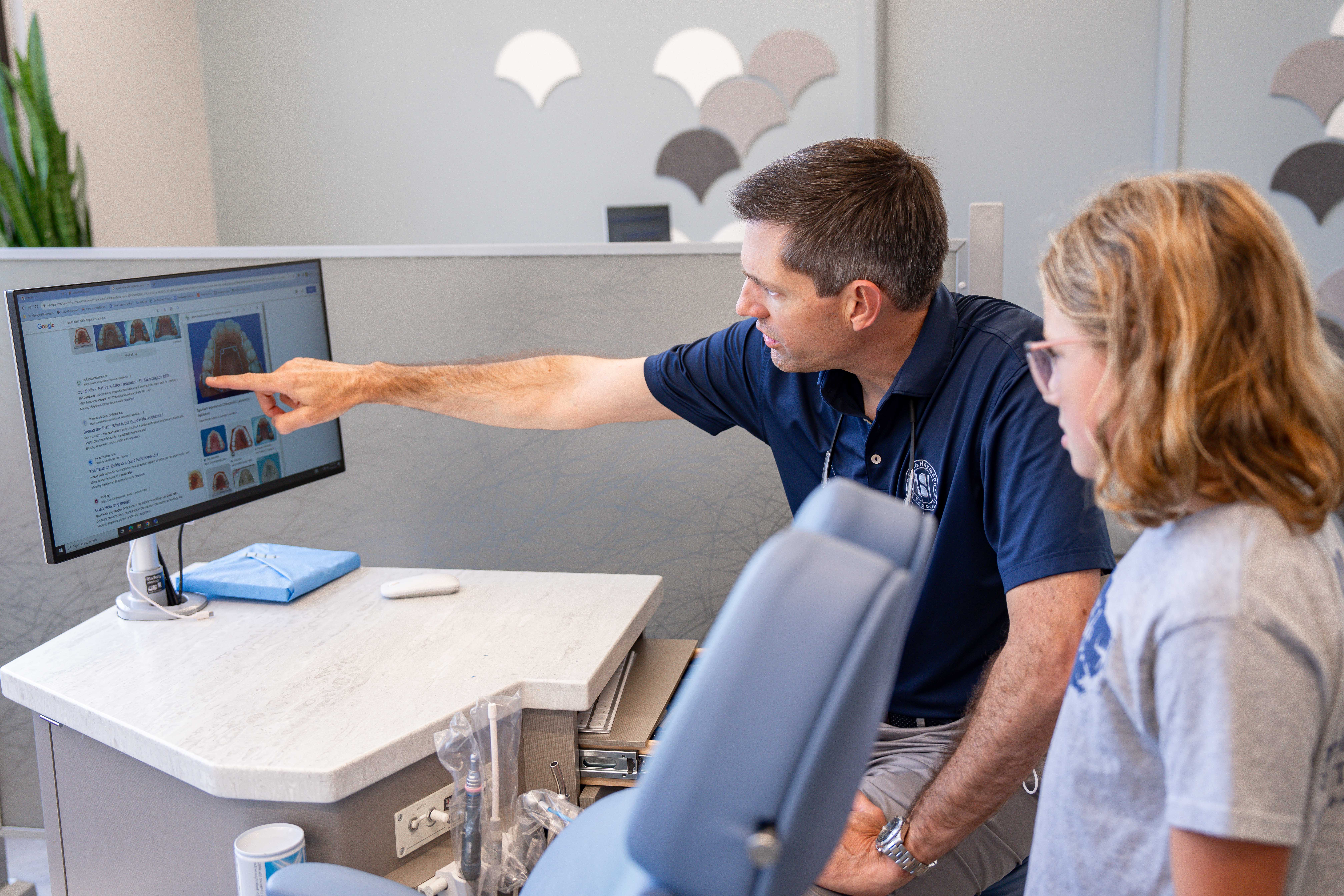Here at Smith & Heymann Orthodontics, we love giving our patients the resources they need to make informed decisions about their oral care. It’s all part of our pledge to provide you with the personal treatment you deserve. Both are an important part of keeping your smile happy and healthy, so let’s learn a little more about the differences between an orthodontist and a dentist.
Education and Training
Orthodontists’ Education and Training
Orthodontists undergo an extensive educational journey to become specialists in their field. They typically start with a bachelor’s degree in a related field, followed by four years of dental school. After completing dental school, aspiring orthodontists must apply for a competitive orthodontic residency program, which typically lasts two to three years. During this residency, they receive specialized training in orthodontics, including diagnosing and treating malocclusions (misaligned bites) and learning to use various orthodontic appliances like braces and aligners. This rigorous training equips orthodontists with the expertise needed to address complex alignment issues effectively.
Board Certification
At the culmination of their training, orthodontists have the opportunity to undergo vigorous board certification to prove their acumen. At Smith & Heymann Orthodontics, all three of our orthodontists are board-certified!
Scope of Practice
Orthodontists’ Scope of Practice
Orthodontists are all about your teeth and jaws. They specialize in the treatment of malocclusions, which include problems like crowded teeth, overbites, underbites, and crossbites. Orthodontists use various orthodontic appliances such as braces and clear aligners (e.g., Invisalign) to gradually move and align teeth. They aim to achieve a functional and aesthetically pleasing bite for their patients.

Treatment Focus
Orthodontic Focus
Orthodontists specialize in treatments focusing on correcting misalignments and irregularities in tooth and jaw positioning. They carefully assess each patient’s unique condition and develop personalized treatment plans. This often involves using orthodontic appliances like braces or clear aligners to gradually shift teeth into their desired positions. Orthodontic treatment aims to improve not only the aesthetics of the smile but also the functionality of the bite.
Collaborative Care
Collaboration between Orthodontists and Dentists
Orthodontists and dentists collaborate often to keep patients healthy and cared for. Dentists may refer patients to orthodontists when they identify alignment issues that require specialized treatment. Conversely, orthodontists refer patients back to dentists for routine check-ups and maintenance during orthodontic treatment. This collaboration ensures that patients receive well-rounded care that addresses both alignment concerns and overall oral health.
Referrals and Consultations
Referrals and consultations between orthodontists and dentists are common practice. Dentists refer patients to orthodontists when they recognize the need for orthodontic intervention. Orthodontists, in turn, may recommend consultations with dentists for issues related to oral hygiene or restorative dental work. This cooperative approach means you’ll get the care you need from the professional best suited to handle your particular issues.

Call Today for a Free Consultation!
We hope you’ve gotten a bit of a better understanding of the differences between an orthodontist and a dentist. Still have questions? Give us a call today! Dr. Smith, Dr. Heymann, and Dr. Skillestad are proud to be Durham, Chapel Hill, Mebane, and Roxboro’s go-to experts for all things smile-related. Not only that but consultations are always free! We can’t wait to see you smile!

